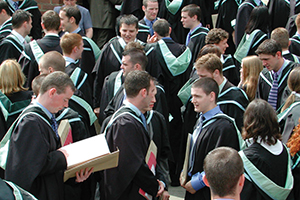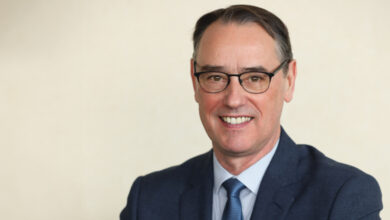Student numbers and qualifications
agendaNi reviews the latest enrolment and qualifications statistics for Northern Ireland students.
Enrolments
 The number of Northern Ireland students enrolled in higher education across the UK has decreased by 2.7 per cent from 65,730 in 2005/06 to 63,965 in 2014/15. In 2014/2015 the number of students entering higher education fell by 0.9 per cent on the previous year.
The number of Northern Ireland students enrolled in higher education across the UK has decreased by 2.7 per cent from 65,730 in 2005/06 to 63,965 in 2014/15. In 2014/2015 the number of students entering higher education fell by 0.9 per cent on the previous year.
Most Northern Ireland students study in Northern Ireland. In 2014/15, 69 per cent were studying in their home region, 24.8 per cent in Great Britain and 5.9 per cent studied through the Open University.
In 2014/15, 72.6 per cent of enrolments were full-time and 27.4 per cent were part-time. Full-time courses have increased by 0.4 per cent on the previous year and part-time enrolments decreased by 4.3 per cent.
Outside of Northern Ireland, Scotland is the most popular region for local students with 4,160 students enrolled. This is followed by 4,025 students who study in North East England. More females are enrolling than males, accounting for 56.4 per cent of all students in 2014/15. A higher proportion of males (74.3 per cent) were studying full-time than females (71.3 per cent).
Fewer students are enrolling on full-time undergraduate courses; this figure has decreased by 1.4 per cent in 2014/15 on the previous year. 25.5 per cent of students were studying a narrow STEM subject and 47.1 were enrolled to study a broad STEM subject.
Qualifications
Over the past 10 years, the numbers of Northern Ireland students achieving a higher education qualification has remained fairly steady. However, more females are qualifying with better grades than males.
In 2014/2015, 18,065 students graduated. This is a decrease of 2 per cent from 2005/06 levels. Fewer students are graduating from Northern Ireland institutions, this has decreased by 5.3 per cent between 2005/06 and 2014/15.
58.5 per cent of graduates were female and 41.5 per cent were male. Of male students gaining a qualification, 78.7 per cent were studying full-time compared to 75.5 per cent of females.
More students are now achieving first degree qualifications, rising by 13 per cent over the past 10 years. Postgraduate qualifications have increased by 1.5 per cent from 4,365 to 4,430. In contrast, the number of qualifications gained by students enrolled on other undergraduate courses (including qualifications equivalent and below first degree level, such as a foundation course) has decreased by 48.1 per cent from 3,695 to 1,920 over the past decade.
There is also variation in gender in terms of subject area. Females accounted for 83.6 per cent of qualifications gained in medicine subjects, 71.9 per cent in education and 69.3 per cent of those gained in languages in 2014/15. Male-dominated subject areas included engineering and technology (82.9 per cent), computer science (75 per cent) and architecture, building and planning (67.2 per cent).
A higher proportion of males qualified in a STEM subject. During 2014/15 46.1 per cent of all students qualified in a broad STEM subject. A higher proportion of males (50 per cent) than females (43.4 per cent) gained their qualification in a broad STEM subject. Just over a fifth (22.3 per cent) of qualifications gained were in a narrow STEM related subject. Again a higher proportion of males (33.4 per cent) than females (14.5 per cent) gained their qualification in a narrow STEM related subject.
A higher proportion of females graduated with a first class or second class upper degree. In 2014/15, 73 per cent of degree graduates achieved either a first class or upper second class honours degree. Females (75.2 per cent) were more likely than males (70.1 per cent) to achieve a first class or upper second class honours degree.





